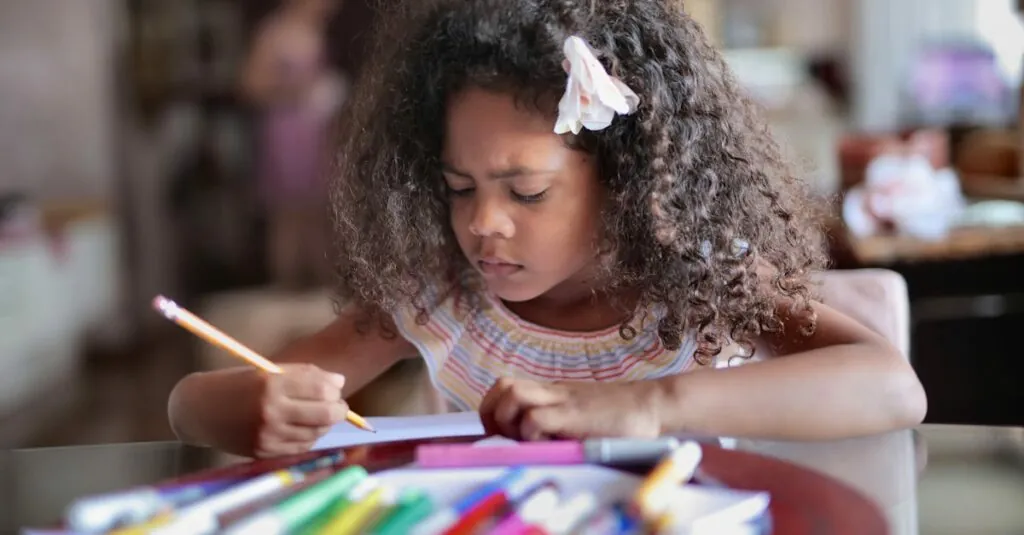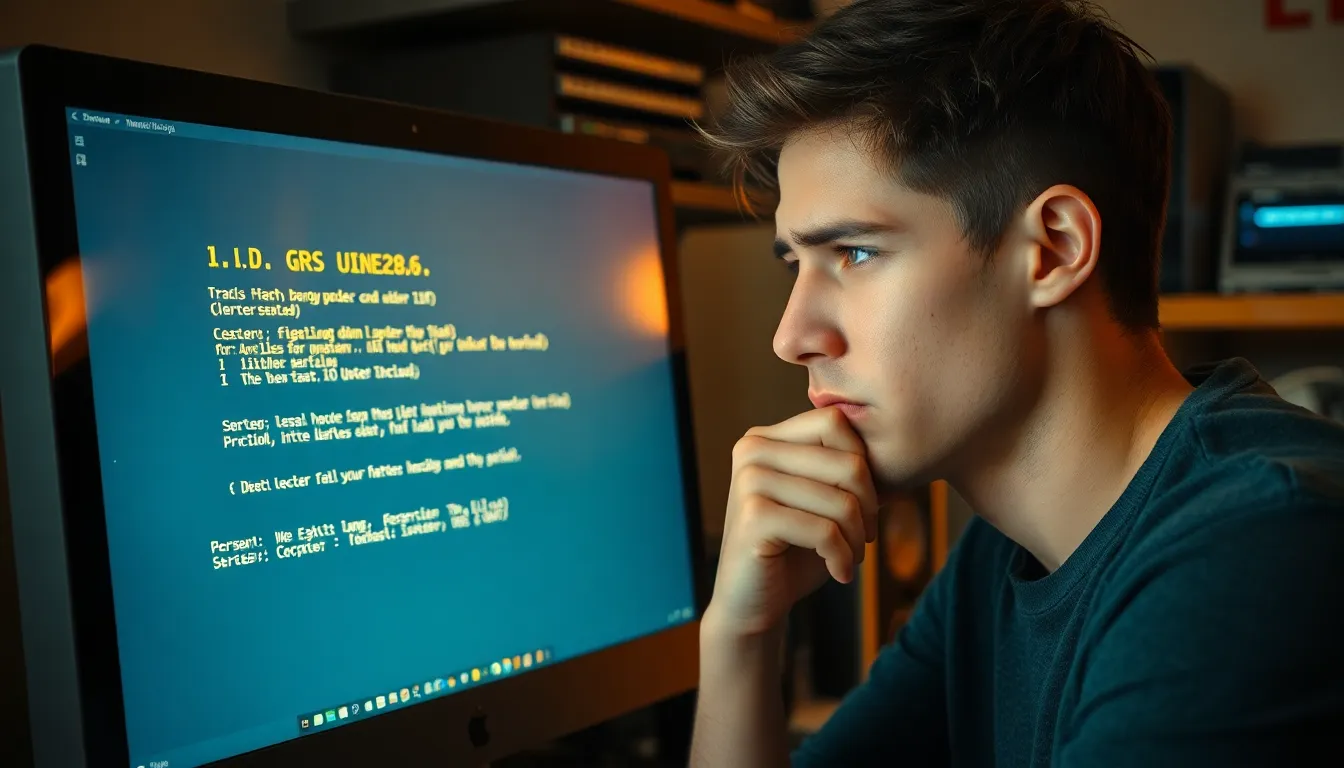In a world where creativity often takes a backseat to standardized testing, it’s time to buckle up and put those imaginative engines in gear. Creative thinking activities for students aren’t just fun—they’re essential for developing problem-solving skills and innovative mindsets. Who knew that a little bit of chaos could lead to genius ideas?
Table of Contents
ToggleUnderstanding Creative Thinking
Creative thinking encompasses the ability to generate new ideas and approach problems from unique angles. It’s essential for students as it enhances their problem-solving skills. Engaging with creative activities leads to innovative solutions. Various activities stimulate this type of thinking, encouraging students to explore their imagination.
Creative thinking activities include brainstorming sessions, where students collaborate to produce multiple ideas. Such group dynamics foster diverse perspectives. Projects that involve design thinking challenge students to identify real-world problems and devise practical solutions.
Teachers play a vital role in nurturing creative thought. By providing a supportive environment, they enable students to express their thoughts without judgment. Encouraging risk-taking allows students to experiment freely. It’s beneficial for educators to integrate creative assignments into the curriculum, giving importance to creativity alongside traditional learning methods.
Understanding the significance of creative thinking aids students in adapting to various challenges. Creativity nurtures flexibility, which is crucial in today’s fast-paced world. These skills not only benefit students academically but also prepare them for future careers. A focus on creativity throughout education makes learning more engaging and meaningful.
Lastly, assessing creativity involves recognizing students’ thought processes rather than just final outcomes. Teachers can track improvements through projects and presentations, giving insights into student development. Prioritizing creative thinking in education transforms how students learn and connect with the world around them.
Importance of Creative Thinking Activities for Students
Creative thinking activities significantly enhance educational experiences and outcomes for students. These activities not only engage learners but also develop critical skills necessary for their future.
Benefits in Education
Engaging students in creative thinking promotes a love for learning. Students who participate in these activities often show increased motivation and enthusiasm in their studies. Creativity fosters collaboration through group projects, encouraging students to share diverse perspectives. They learn to appreciate different ideas, leading to a richer educational experience. Moreover, integrating creative assignments into traditional subjects helps solidify concepts. Students demonstrate improved retention and understanding when creativity is prioritized.
Impact on Problem Solving
Creative thinking directly impacts students’ problem-solving abilities. Students become adept at approaching challenges from multiple angles. Activities like brainstorming sessions encourage individuals to generate a multitude of solutions. Students learn to explore unconventional paths, allowing for innovative resolutions. Flexibility in thinking nurtures resilience, equipping them to navigate complex situations. By prioritizing creativity, students enhance their analytical skills and adaptability, which are crucial in an ever-evolving world.
Types of Creative Thinking Activities
Creative thinking activities can be categorized into individual and group activities, each fostering unique aspects of creativity.
Individual Activities
Individual activities promote self-expression and independent thought. Journaling allows students to document their thoughts, enhancing reflective skills. Sketching or doodling encourages visual communication, while personal projects spark passion and innovation. Students can explore creative writing prompts, enabling imaginative storytelling. Mind mapping becomes an effective tool for organizing ideas visually, making complex concepts easier to grasp. Puzzle-solving challenges enhance critical thinking, pushing students to devise unconventional solutions. Participating in solo challenges helps individuals build confidence in their creative abilities, reinforcing self-discovery and personal growth.
Group Activities
Group activities emphasize collaboration and diverse perspectives. Brainstorming sessions invite students to generate ideas collectively, fostering open dialogue. Design thinking workshops encourage teams to address real-world problems through structured creative processes. Role-playing exercises allow participants to step outside their comfort zones, enhancing empathy and understanding. Collaborative art projects inspire cohesive creativity by combining individual styles. Group discussions on various topics foster critical thinking and effective communication, essential skills for teamwork. These activities cultivate an environment that nurtures creativity, reinforcing teamwork and enhancing interpersonal relationships among students.
Implementing Creative Thinking Activities in the Classroom
Integrating creative thinking activities in the classroom enriches the learning experience for students. These activities stimulate engagement and foster essential problem-solving skills.
Planning and Preparation
Effective planning and preparation form the foundation of creative thinking activities. Teachers should outline objectives clearly, choosing activities aligned with curriculum goals. Preparing materials in advance ensures smooth execution during class. Knowing students’ interests allows for tailored activities that resonate more deeply. Assessing resources beforehand helps to identify any necessary tools or spaces for special activities. Setting aside dedicated time for brainstorming sessions enhances focus. Students thrive in environments where clarity and structure coexist with creative freedom.
Encouraging Participation
Encouraging participation creates a vibrant classroom atmosphere. Inviting every student to share ideas cultivates an inclusive environment. Using diverse discussion formats, like small groups or pairs, increases student comfort in expressing themselves. Implementing incentives, such as positive reinforcement for contributions, enhances motivation. Facilitating open-ended questions provokes deeper thinking and engagement. Showing enthusiasm as a facilitator reinforces encouragement and excitement. Emphasizing that all ideas hold value nurtures confidence. Integrating reflective practices after activities helps solidify understanding.
Measuring the Effectiveness of Creative Thinking Activities
Measuring the effectiveness of creative thinking activities involves assessing both process and outcomes. Teachers should track student engagement during activities, noting participation levels and enthusiasm. Observations during brainstorming sessions can provide insight into collaborative dynamics and problem-solving approaches.
Curricular outcomes require evaluation through projects and presentations. Students demonstrate their understanding and application of creative concepts in tangible forms during these assessments. Results from rubrics can reveal strengths and areas for improvement in students’ creative processes.
Feedback mechanisms enhance the evaluation process. Encouraging peer assessments fosters reflection and enables students to critically analyze their work and the work of others. Teachers can utilize surveys to gather student perceptions of the activities, providing further insight into the effectiveness and appeal of each method.
Integration of creative portfolios presents another assessment tool. Portfolios showcase students’ progress over time, allowing for an in-depth review of individual development. Regular iterations in portfolio work highlight students’ evolving creativity and adaptability.
Benchmarking against learning standards establishes a framework for measuring creativity’s impact on students’ academic performance. These standards help quantify observable skills, such as critical thinking and innovation. Clear objectives aligned with curriculum goals facilitate the assessment of creativity-related growth.
Data collection from various sources strengthens the evaluation process. Utilizing qualitative and quantitative measures provides a comprehensive picture of how creative thinking activities enhance students’ problem-solving skills. This multi-faceted approach allows educators to prioritize creative thinking more effectively, ensuring that it occupies a central role in their teaching strategies.
Embracing creative thinking activities in education is essential for nurturing well-rounded students. These activities not only enhance problem-solving skills but also instill a love for learning that can last a lifetime. By integrating both individual and group activities into the curriculum, educators can foster an environment where creativity thrives.
Teachers play a pivotal role in this process by providing the right support and resources. As students engage in creative tasks, they build resilience and adaptability—skills that are invaluable in today’s fast-paced world. Prioritizing creativity ensures that students are not just prepared academically but are also equipped to tackle future challenges with confidence and innovation.






